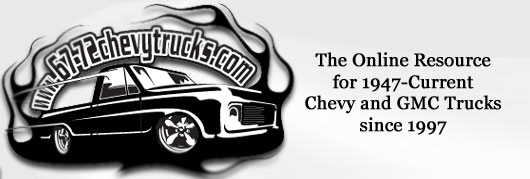
 |
Q-Jet Question
I am currently using a stock mechanical fuel pump that feeds my Q-Jet. There is no doubt in my mind that the stock mech fuel pump is delivering way too much fuel. I reek of raw gas every time I exit my truck. I know it's not my cam profile because it's stock. I have a regulator and PSI gauge to install, but I want it adjusted properly. I have the following application:
What is the recommended fuel PSI that a Q-Jet should receive? |
Re: Q-Jet Question
This isn't going to answer your question, but, there is no way a stock fuel pump is going to be supplying too much fuel for the q-jet. I would be looking at the carb as the possible problem as to why it is running so rich.
|
Re: Q-Jet Question
Quote:
|
Re: Q-Jet Question
Not sure on a quadrajet, but a Rochester 2Jet (like a Pontiac Tripower) is 6 psi.
K |
Re: Q-Jet Question
I believe all carbs need about 4-6 psi. It's very rare that a mechanical pump delivers too much fuel. Have you checked the float level? Could it be possible that they are stuck open?
|
Re: Q-Jet Question
SMI website says 4 psi.
|
Re: Q-Jet Question
just to clarify, when you say stock mechanical fuel pump, is this a stock gm pump, or is it an aftermarket mechanical pump? Stock pumps weren't regulated from the factory that I know of.
|
Re: Q-Jet Question
6 sounds right to me. 4 sounds a little low. I would check the float level also.
|
Re: Q-Jet Question
Haynes......for men lol says 5-9 psi
1/2 a pint or more in 15 secs how high are you holding the pressure gauge? |
Re: Q-Jet Question
Quote:
|
Re: Q-Jet Question
I will speak with Sean Murphy today and let you guys know what he says. It's looking like 4-6psi is the sweet spot. I will crack into the carb to check the float level, but only after speaking with SMI. This isn't something that they overlook or miscalculate often.
|
Re: Q-Jet Question
I forgot to post my findings on this matter. I did speak to one of Sean Murphy's techs yesterday, and he said that 4.5-5.5 psi is optimal for a 750cfm Q-Jet. Since my motor is close to stock, he suggested 5 psi. I'm adding a fuel pressure regulator soon, so I'll let you know what I find.
|
Re: Q-Jet Question
Just a couple of WAGs (Wild A** Guess) on your fuel smell.
When I had a strong gas smell it was: 1) Fuel inlet nut not seated all the way. Fuel would seep out, high the hot intake manifold, vaporize, and show no signs of leaking. 2) My C20 has short vent tubes on the sending units, not lines to a vapor recovery canister under the hood. This was legal in 83 for 3/4 ton trucks (considered heavy duty trucks.) Those vent tubes are designed to release vapor right at the tank, which is right behind the cab (and driver's seat), so I got a good whiff of gas every time I exited the truck. My solution was to route long vent lines to the rear bumper and install vent caps on those lines back there. Now I get a big whiff of gas when I go back to the tailgate to load/unload the truck.;) Let me know if you want pics of this creative re-engineering. |
Re: Q-Jet Question
How much pressure is your fuel pump currently generating? I'm not sure I understand the logic of adding a regulator when the current pressure is unknown.
Quadrajets can stand a higher inlet fuel pressure than a Holley carburetor, so for performance applications, we generally run 7.5 to 8.0 PSI. However, if Mr. Murphy recommends you run 5.0 PSI on his carburetor, that's what you should run. Keep us posted. |
Re: Q-Jet Question
I had about 3 differenty fuel pressure gauges and pumps on a camaro and they always showed zero after warm up. Drove me crazy.
|
Re: Q-Jet Question
Let us know what you find out.
|
Re: Q-Jet Question
Quote:
you are running a 750 cfm q-jet on a 350 with a stock cam?!?!?! fuel pressure isn't your problem. That carb. is WAY to big for the motor. |
Re: Q-Jet Question
The vast majority of Quadrajet carburetors are in the 750 to 850 CFM range, and they came stock on millions of small block Chevrolet engines. GM was able to use these carbs on a variety of engines because they are spreadbore carburetors, which means they have very small primary bores and very large secondary bores. Also, the secondaries open via a vacuum signal, so when set up properly, the secondaries do not open until the engine requires the extra airflow. Therefore, the 750 CFM Quadrajet isn't too large.
It remains to be seen, however, what the OP discovered was the fix to his problem. |
| All times are GMT -4. The time now is 09:28 AM. |
Powered by vBulletin® Version 3.8.11
Copyright ©2000 - 2025, vBulletin Solutions Inc.
Copyright 1997-2025 67-72chevytrucks.com